
The city of Pushkin (formerly Tsarskoye Selo) is a city in the Pushkin district of the federal city of St. Petersburg.
Pushkin is considered a suburb of St. Petersburg.
Since 1808, Tsarskoye Selo was established as the city of Tsarskoye Selo and the city bore this name until 1918. From 1918 to 1937, the city was called the Children's Village, because after the revolution of 1917, the new authorities handed over the best buildings of the city to educational and health institutions for children. Since 1937, the city was given the name Pushkin, in commemoration of the centenary of the tragic death of Alexander Sergeevich Pushkin, since the future poet was brought up at the Imperial Lyceum in Tsarskoye Selo.
The formation of the city, which was originally called Sarskaya Manor, was associated with the expulsion of the Swedes from this territory under Peter I. After that, on the site of a small Swedish estate "Saris hoff" or "Saaris moisio" (translated from Finnish - "manor on an elevated place", and in Russian - Sarskaya manor), a small Tsaritsyn Palace with an adjacent garden was erected for Catherine I (wife of Peter I), which later became known as Catherine's. It was a suburban royal residence, around which villages appeared, as well as a settlement of palace servants. Soon Sarskaya Manor began to be called Sarskoye Selo, and with the beginning of palace construction, it received the high title of Tsarskoye Selo.
For two centuries, Tsarskoye Selo was the summer ceremonial imperial residence, which after the October Revolution of 1917 was turned into a museum.
The city with its integral palace and park ensemble suffered greatly during the Great Patriotic War (World War II). After it was restored, including with the help of preserved parts, as well as according to historical drawings and photographs.
Today, the historical part of the city of Pushkin is included in the list of monuments protected by UNESCO.
The city attracts many tourists, and, first of all, thanks to the Tsarskoye Selo Palace and Park Ensemble, which is a brilliant monument of world architecture and landscape art of the 18th - early 20th centuries, where the best examples of Baroque and classicism architecture are concentrated, and where the first modern interiors in the Russian capital (St. Petersburg) once appeared. These are two parks with the same name palaces - Catherine and Alexander.
In addition to the palaces with the surrounding parks in Pushkin also has other attractions, including historical buildings, parks and squares, monuments, churches and temples, and museums, historic shopping center, the water tower on the roof that now boasts a 360-degree viewing platform, shops and souvenir shops, cafes and restaurants, accommodation facilities (hotels and apartments)

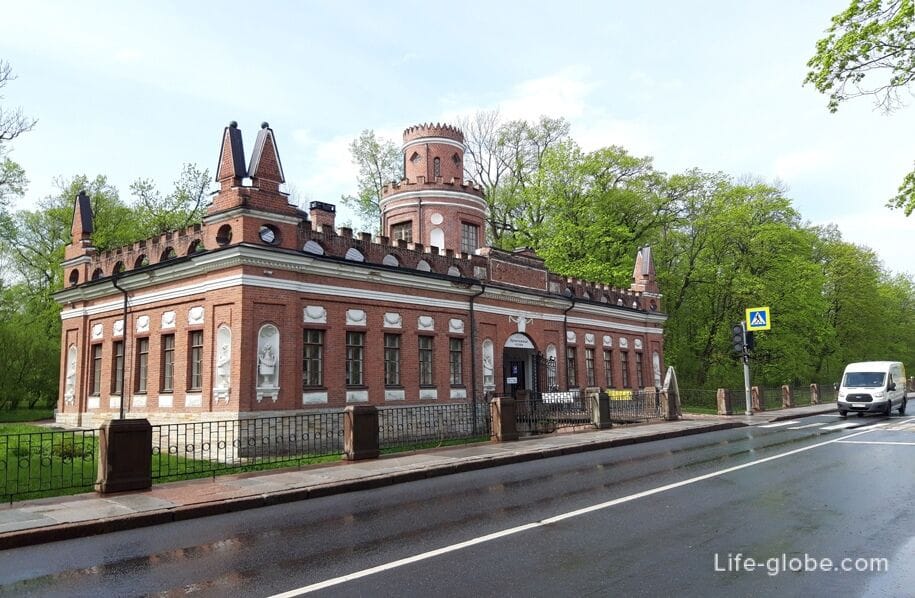
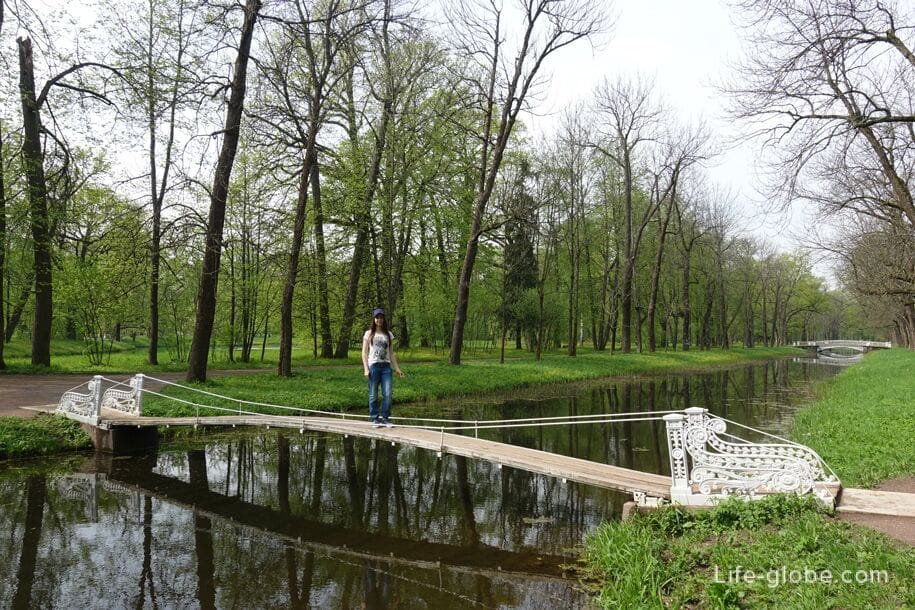
You can visit Pushkin (Tsarskoye Selo) from the center of St. Petersburg both independently and with one of the excursions
Catherine Park is a large park that is the dominant of the Tsarskoye Selo complex, as well as one of the most picturesque and visited parks in St. Petersburg.
The name "Catherine" Park was given to the Catherine Palace located in the park, named in honor of Catherine I.
The compositional center of the park ensemble is The Great Tsarskoye Selo (Catherine) Palace, which is a magnificent example of Russian Baroque with luxurious interior decorations in the spirit of the Elizabethan and Catherine epochs with unique works of fine and applied art.
In the palace (for a fee) you can visit the restored palace halls, as well as (for a fee) - the Church of the Catherine Palace (Resurrection of Christ), located in the palace wings. In addition, temporary exhibitions are held in some halls of the palace. Learn more about the Catherine Palace...
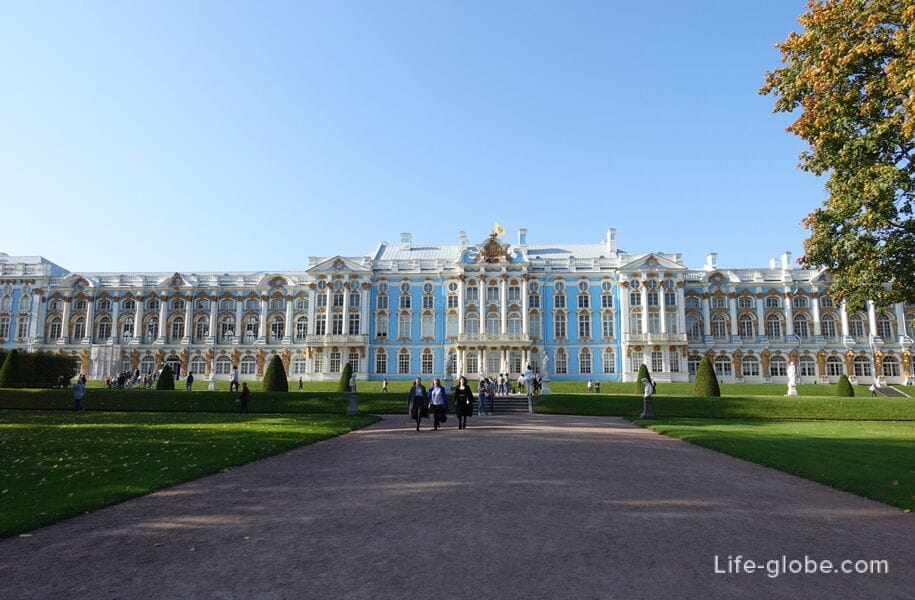

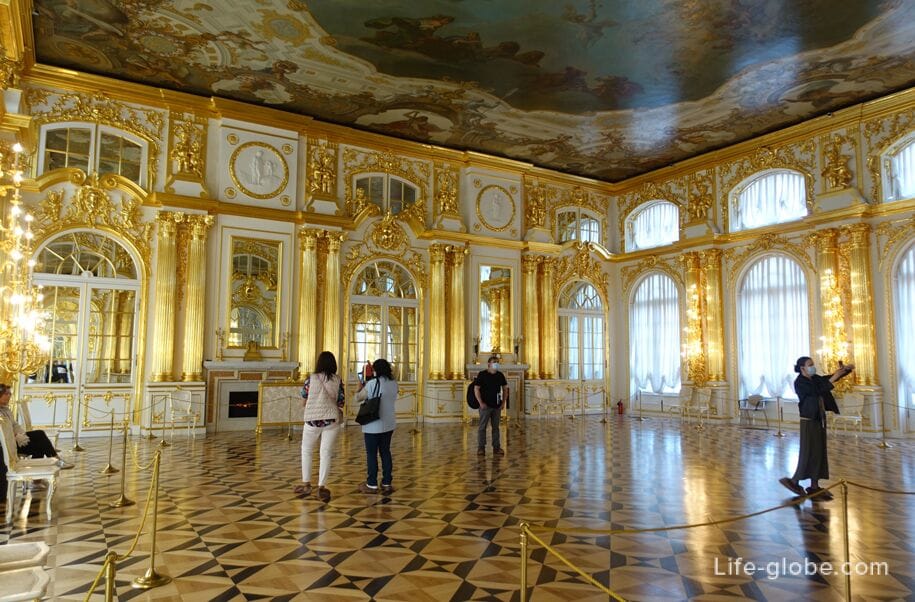
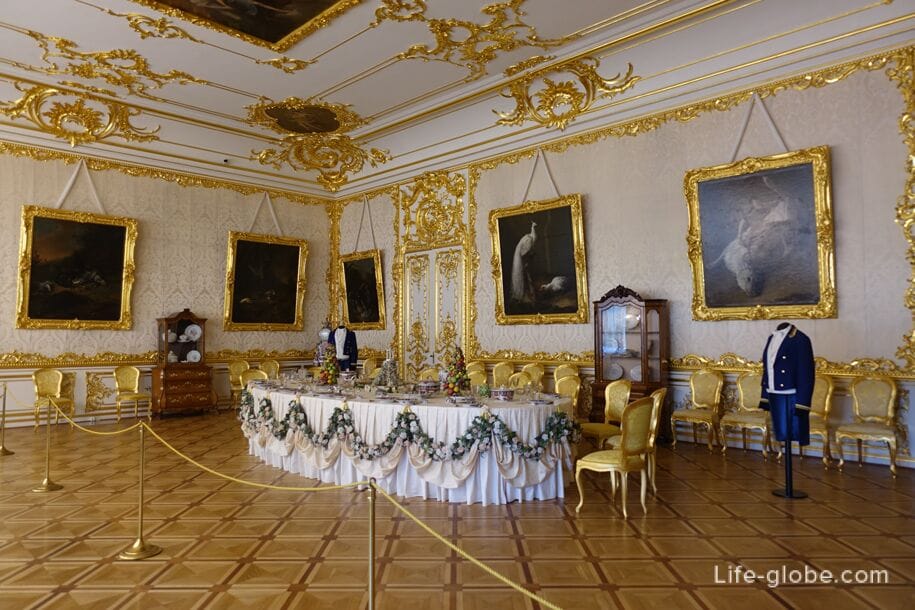
The Catherine Palace is adjacent to the eponymousCatherine Park, which has an area of more than 100 hectares.
The park consists of two parts: a regular Old Garden and a landscape English Park.
On the territory of the Catherine Park there are: pavilions, some of which now contain museums, sculptures, monuments and bridges erected in various architectural styles, as well as piers, ponds, flower beds, alleys and walking paths with places to relax.
Entrance to the park is paid. Learn more about Catherine Park...

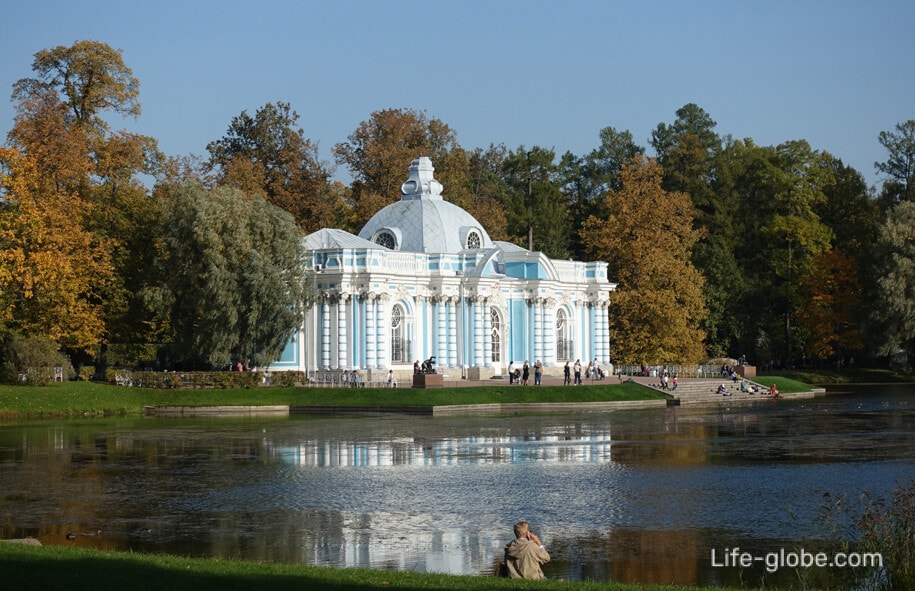
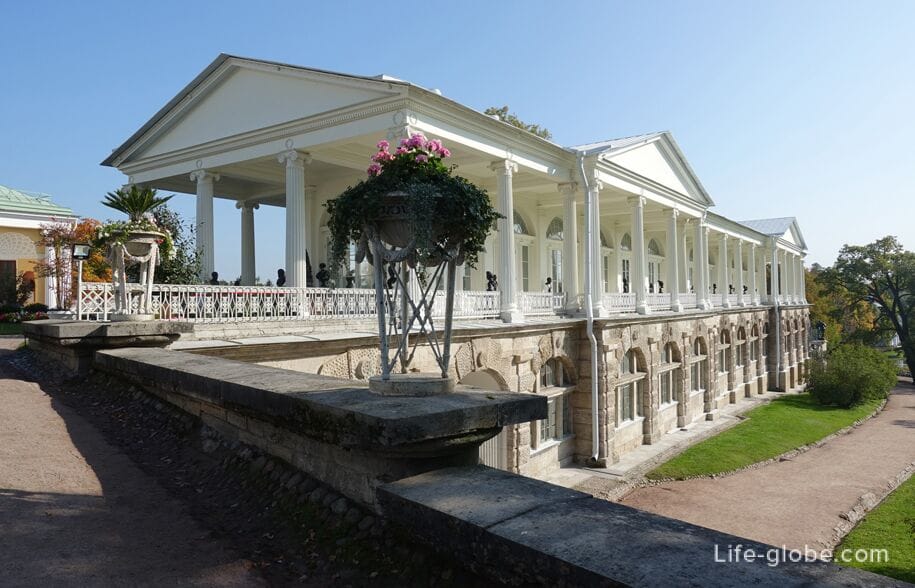

Adjacent to the Catherine Park and the palace is Alexander Park, which has an area of about 200 hectares. and consisting of a New garden (a regular part of the park with a geometrically correct layout) and a Landscape Park.
The main dominant of the park is Alexander Palace, which is one of the best creations of classical architecture.
The palace was erected by order of Empress Catherine II as a gift for the marriage of her grandson, Grand Duke Alexander Pavlovich (the future Emperor Alexander I) with Grand Duchess Elizabeth Alekseevna.
Within the walls of the palace there are: A corner living room, a hall with a slide, a Library, a State study of Nicholas II, a Moorish lavatory, a study, a Reception Room of Nicholas II, Bedrooms, a Lilac study of Alexandra Feodorovna, a Rosewood reception room of Alexandra Feodorovna, a Maple living room, etc.

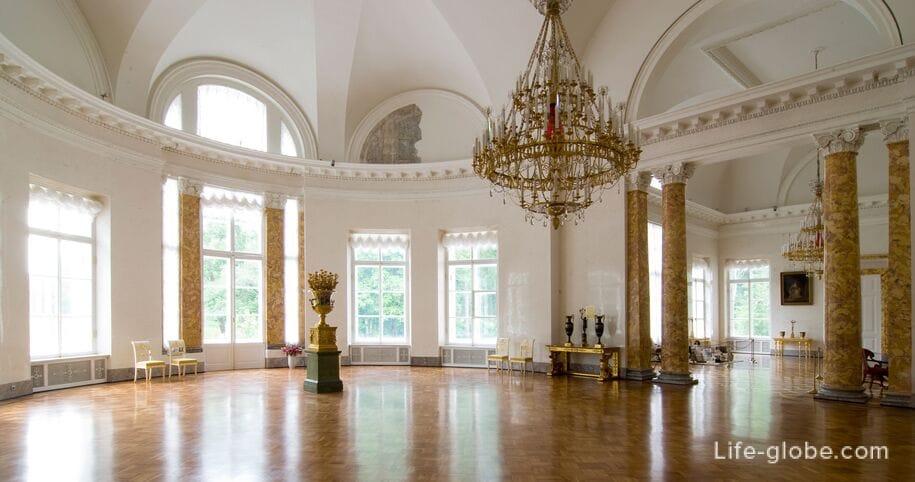
In addition to the palace on the territory of the Alexander Park there are: pavilions, one of which now houses a museum (Arsenal), the White Tower complex, Chapelle in the form of an old ruined temple, a Chinese village, monuments and bridges erected in various architectural styles, as well as ponds, low hills, natural forest areas, alleys and walking paths with places to relax.
The entrance to the Alexander Park, with the exception of the entrance to the palace and the pavilion-the Arsenal Museum, is free (free). More about Alexander Park and Alexander Palace...



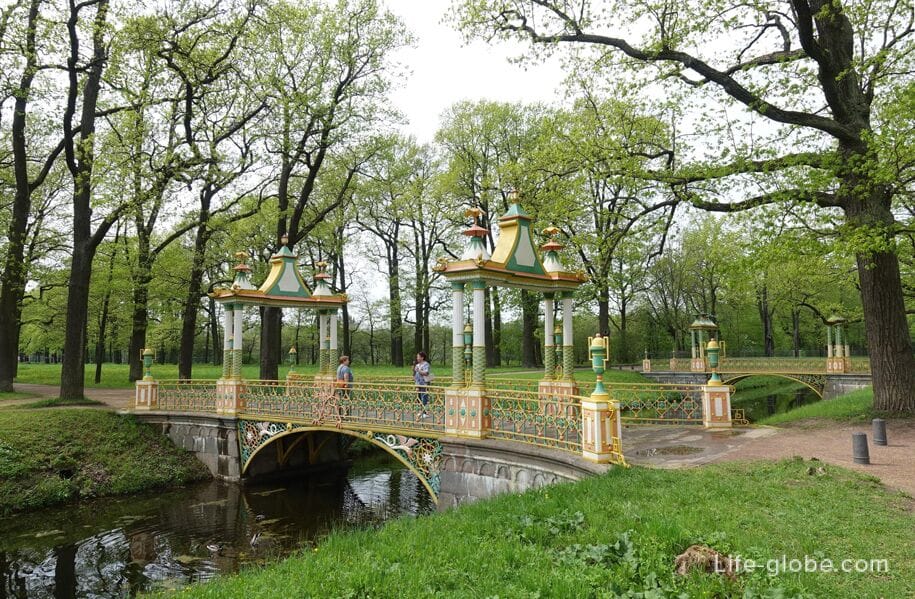
The central square of the city of Pushkin is Cathedral Square, the dominant of which, located in the center of the square, is the current Orthodox Cathedral of St. Catherine the Great Martyr.
In the basement halls of the Catherine Cathedral there is a museum dedicated to the temples of the Tsarskoye Selo deanery, as well as telling about the construction of the Catherine Cathedral by architect Ton, the destruction and reconstruction of the shrine.
The Cathedral Square itself is surrounded by iconic historical buildings. Learn more about the square, the cathedral and the museum...
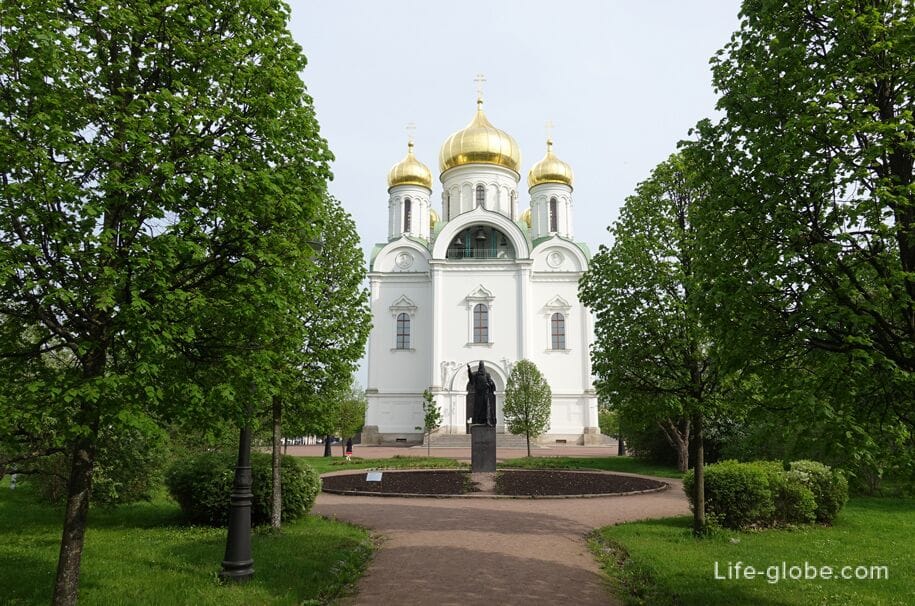
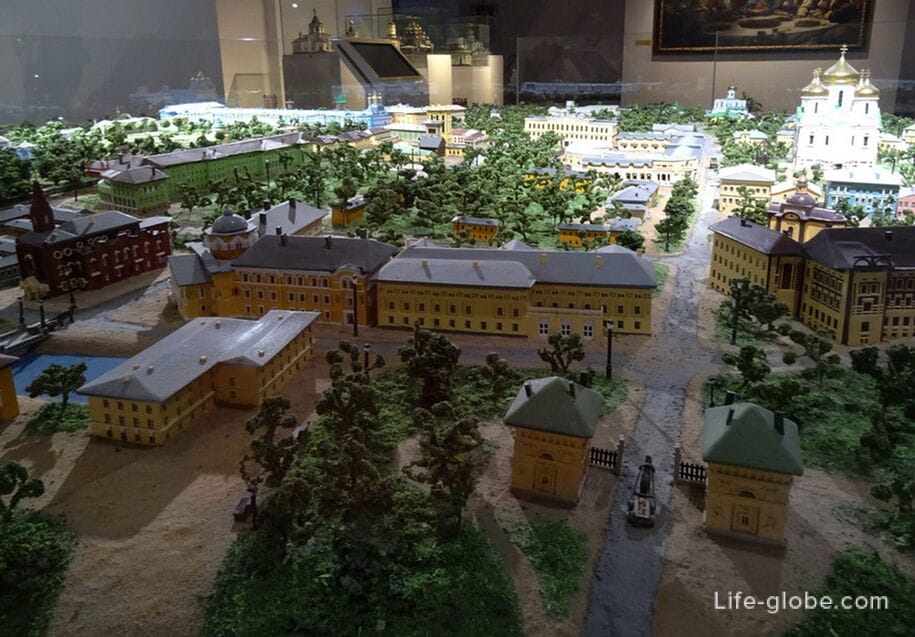
The historical shopping center in Pushkin, which has existed since the beginning of the 19th century, is the Gostiny Dvor shopping center.
Gostiny Dvor was originally made of wood and was formed in 1818 according to the plans of V.I. Geste.
In 1862, most of the wooden complex was destroyed by fire. The restoration of the Gostiny Dvor was carried out in stone. The building was opened for trade in 1866.
Today, as many years ago, the Gostiny Dvor complex continues to be used for trade.
The building has one floor. Its facades are decorated with an arched gallery. The general decor of the main building is complex, which brings it closer to the Baroque style.
From the courtyard side, the complex includes the so-called "Meat Rows" building (originally erected in 1843-1844 by architect N.S. Nikitin in stone), which has a semicircular shape and is decorated in the style of late classicism.
The address of Gostiny Dvor: Moskovskaya Street, 25.
Gostiny Dvor website: bc-gostiniydvor.
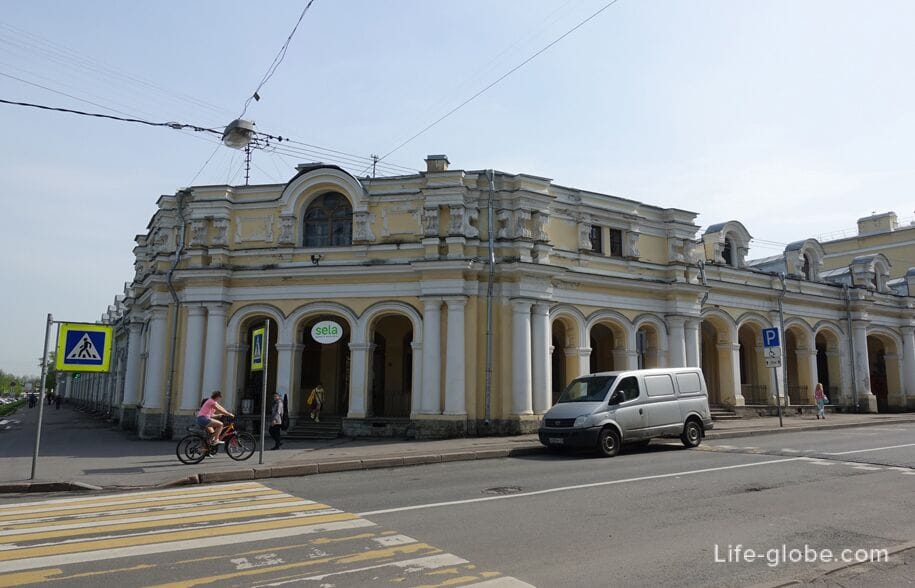
Another visited and famous green corner in Pushkin is the Lyceum Garden, which is located next to Alexander Park.
Lyceum Garden attracts guests with a monument to A.S. Pushkin and a small The Znamenskaya Church, which was built in honor of the Icon of the Mother of God of the Sign in 1734-1747 by architect Mikhail Grigoryevich Zemtsov and his closest assistant Ivan Yakovlevich Blank, at the behest of Tsarevna Elizabeth Petrovna.
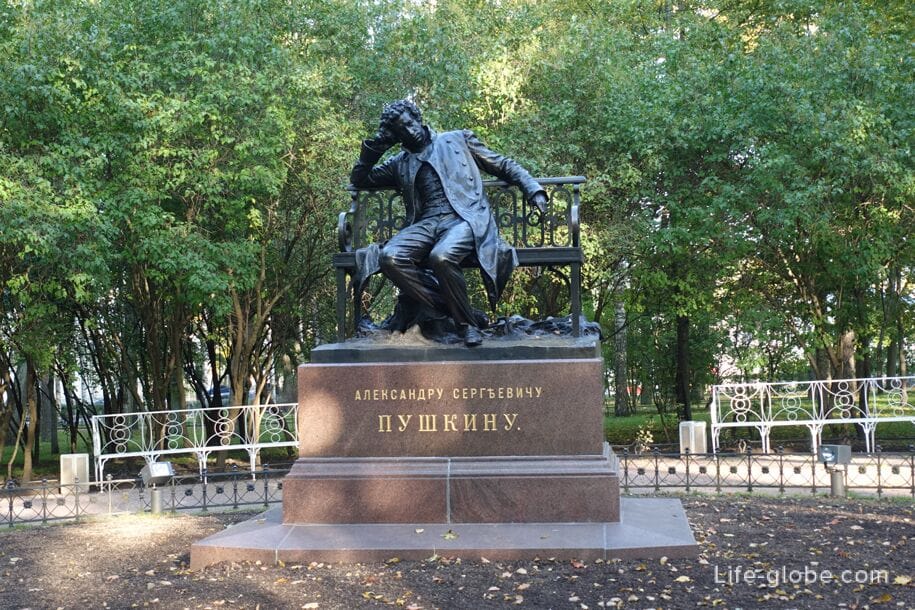
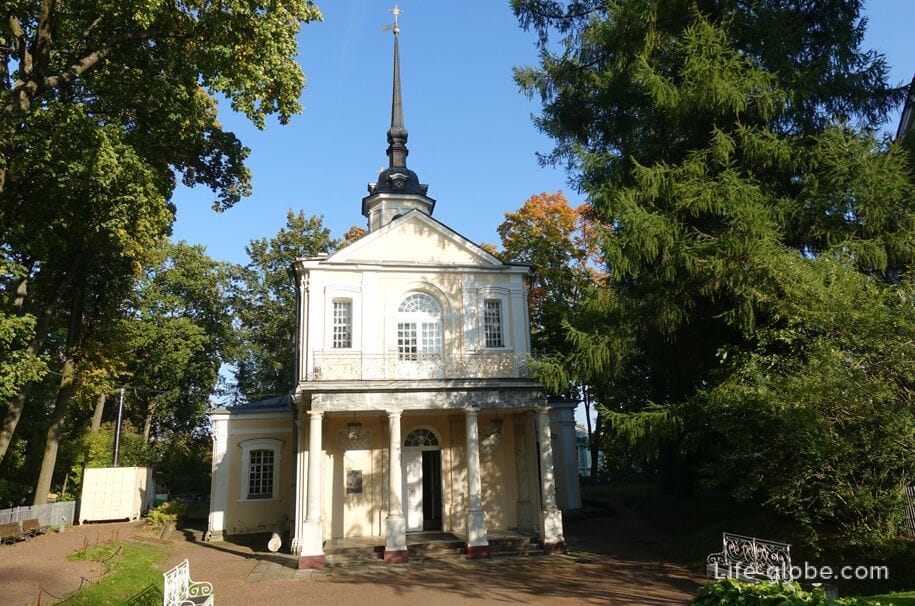
The Singing Tower is a historical structure that was built as a water tower in 1887 according to the project of Academician of architecture Alexander Fomich Vidov, when the construction of a water pipeline in Tsarskoye Selo was started.
Today, the tower building has been restored, has a height of 30 meters and seven floors, as well as extensions, which include: restaurants, a karaoke bar, a 5-star Singing Tower hotel, a souvenir shop, a banquet hall and an outdoor observation deck located on the roof of the tower.
The address of the Singing water tower: Lyceum lane, 7. Learn more about the tower and the observation deck...
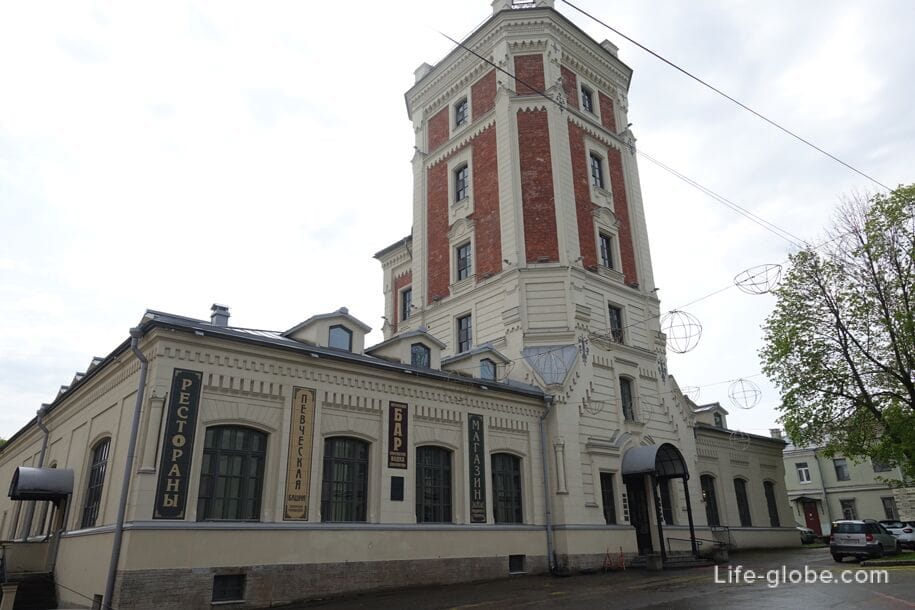
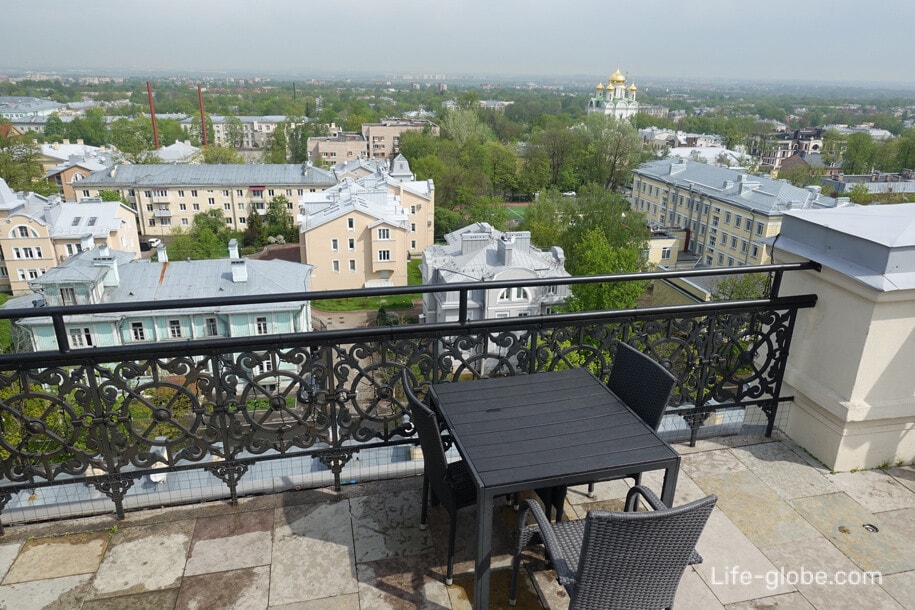
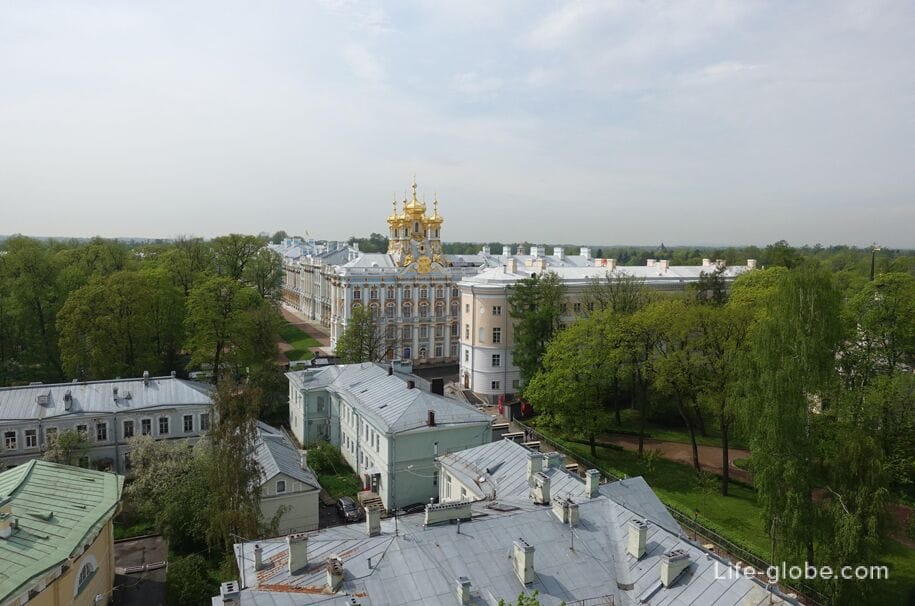
The building of the duty stable was erected in 1822-1827 according to the project of architects Vasily Petrovich Stasov and Smaragd Loginovich Shustov.
These were the emperor's own stables, located not far from the Catherine Palace with the adjacent park.
The walls of the court stable today house the permanent exhibition "The Court Carriage in Tsarskoye Selo", which presents a collection of 25 imperial carriages by Russian and Western European masters of the 18th and 19th centuries, including ceremonial carriages, as well as pleasure and city carriages, children's carriages and sleighs, which were once items of personal imperial use.
The address of the museum: Sadovaya Street, 8. Learn more about the stable and the exhibition...
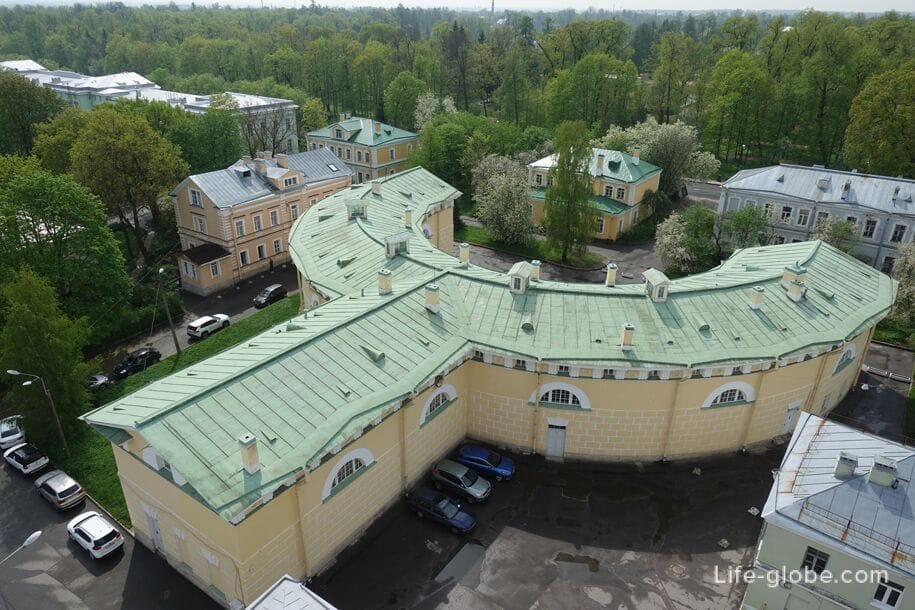

The complex of the Imperial Farm was erected by A.A. Menelas in 1818-1828 and consisted of a pavilion of the highest presence, a Dairy, a cowshed, sheds for merinos, a caretaker's house and other buildings on the meadows of the park adjacent to the complex of the Imperial Farm, where cattle were grazed.
At present, the best preserved buildings of the Imperial Farm are the Cowshed building and the Caretaker's House, built of red brick.
The farm complex is located in the northern part of the Alexander Park (now outside the park, across the Farm Road).

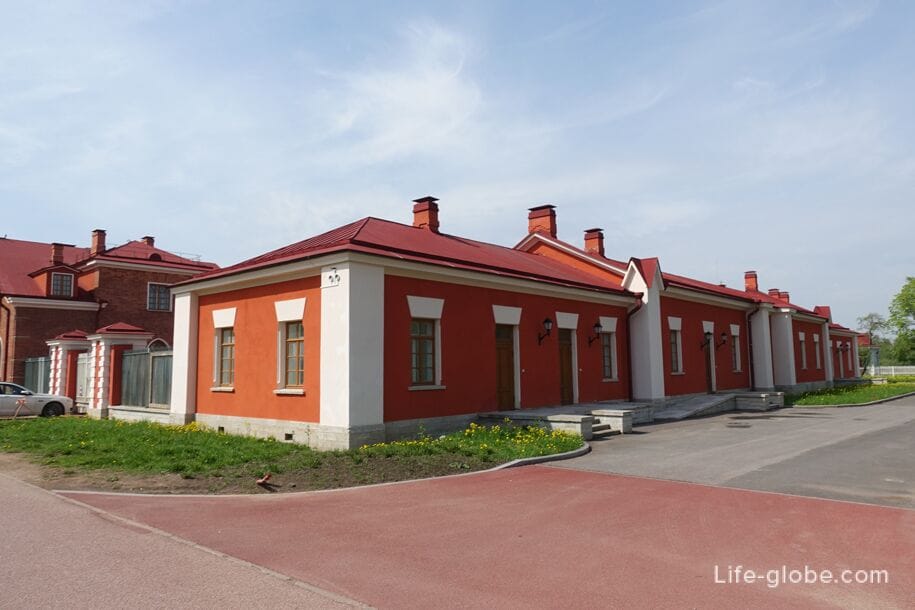
The Military Chamber is a monument of architecture of the neo-Russian style and consists of a complex of buildings, in the center of which there is an inner courtyard.
The military history museum "Russia in the Great War", dedicated to the participation of the Russian Empire in the First World War, is located within the walls of the military chamber.
Address of the military chamber: Farmskaya road, 5A. More about the Military Chamber and the museum with photos...
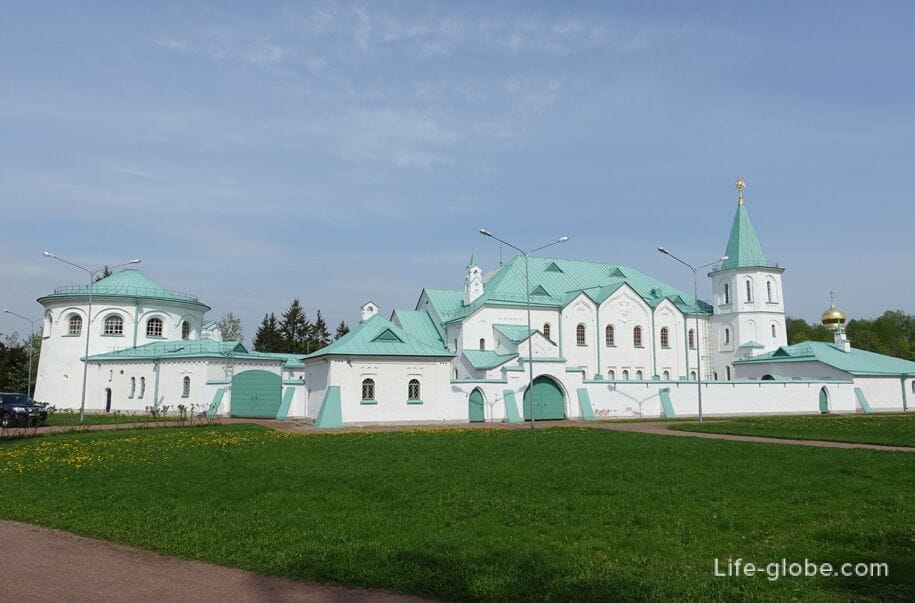
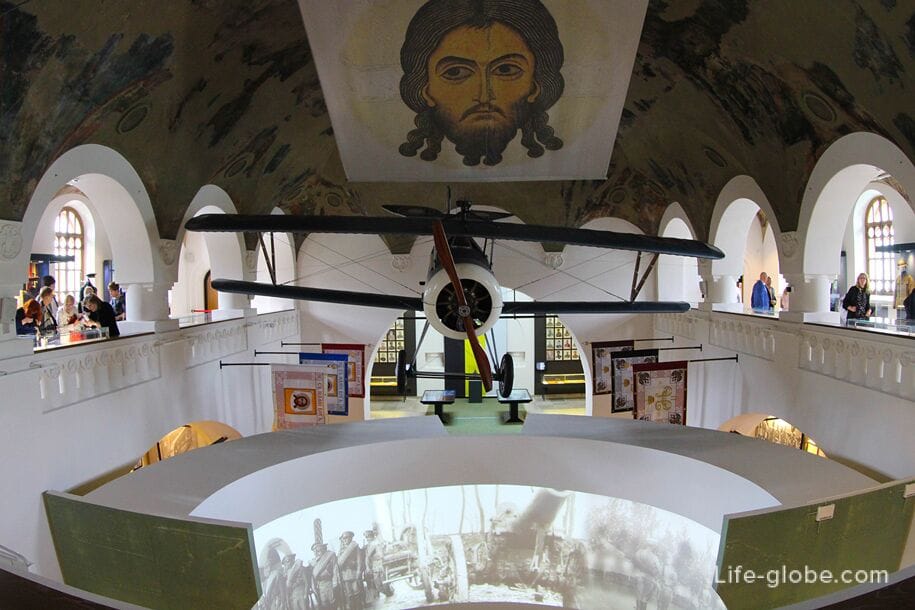
The Feodorovsky Sovereign Cathedral with the adjacent complex of buildings, which is called the Fedorovsky Town (original name: Houses for the clergy and employees of the Fedorovsky Sovereign Cathedral) were built in Tsarskoye Selo by 1912-1918 by decree of the last Russian Emperor Nicholas II.
The main idea of the construction was the visualization of the history of Russian architecture and art from the 12th to the 17th centuries. The complex embodies the idea of the image of Holy Russia.
In 1991, the Sovereign's Cathedral, and with it the town, was transferred to the Russian Orthodox Church.
The address of the Feodorovsky Cathedral: Academic Ave., 34.Cathedral website: gosudarev.cerkov.
Address of the Feodorovsky town: Academic lane, 28.The site of the town: russianstyle.ifmo.
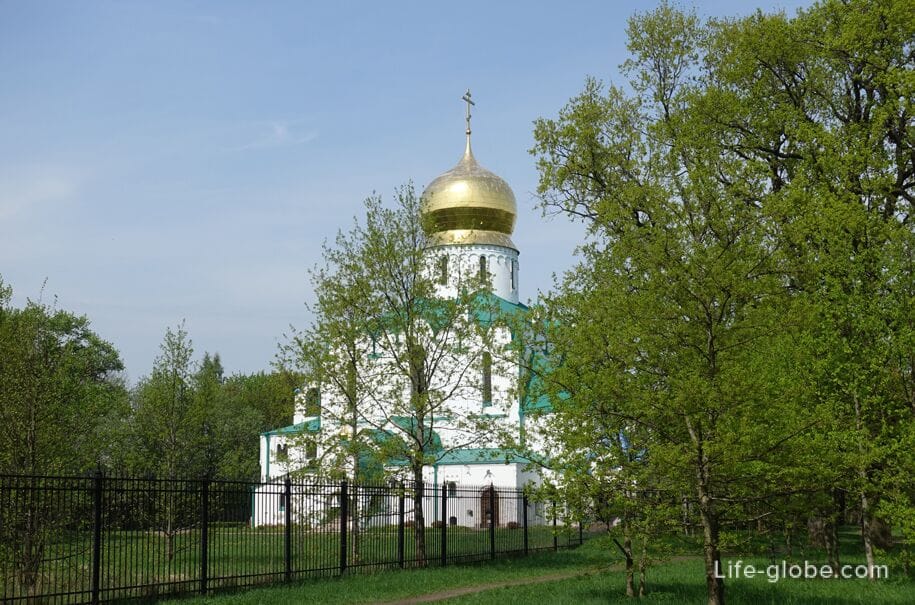
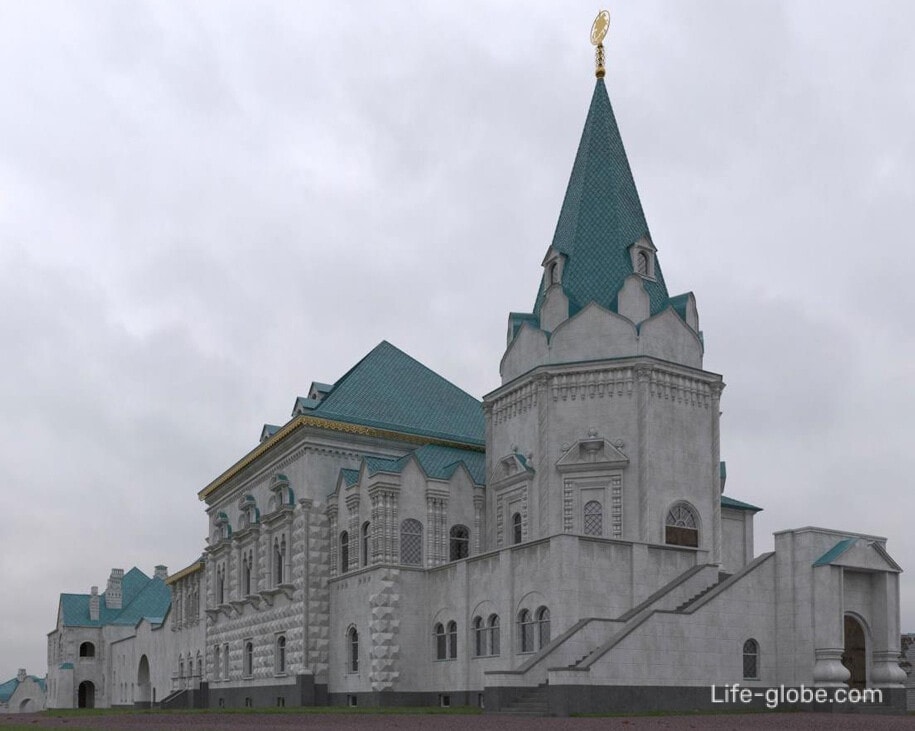
The Museum-dacha of A.S. Pushkin is a memorial museum of Alexander Sergeevich Pushkin.
The museum is located in the former house of the widow of the court valet Anna Kitaeva, where Alexander Sergeevich Pushkin rented a dacha (8 rooms) from May 25 to mid-October 1831. Pushkin arrived in Tsarskoye Selo with his wife Natalia Nikolaevna shortly after the wedding.
Among the rooms in the museum-dacha, you can visit the dining room, living room, boudoir, bedroom and the recreated study of the poet in the mezzanine of the house.
A special section of the exposition is dedicated to the stay in Tsarskoye Selo of N.M. Karamzin and V.A. Zhukovsky, senior contemporaries and literary mentors of Pushkin.
The address of the memorial museum-dacha of A.S. Pushkin: Pushkinskaya Street, 2/19. More about Pushkin's dacha museum...
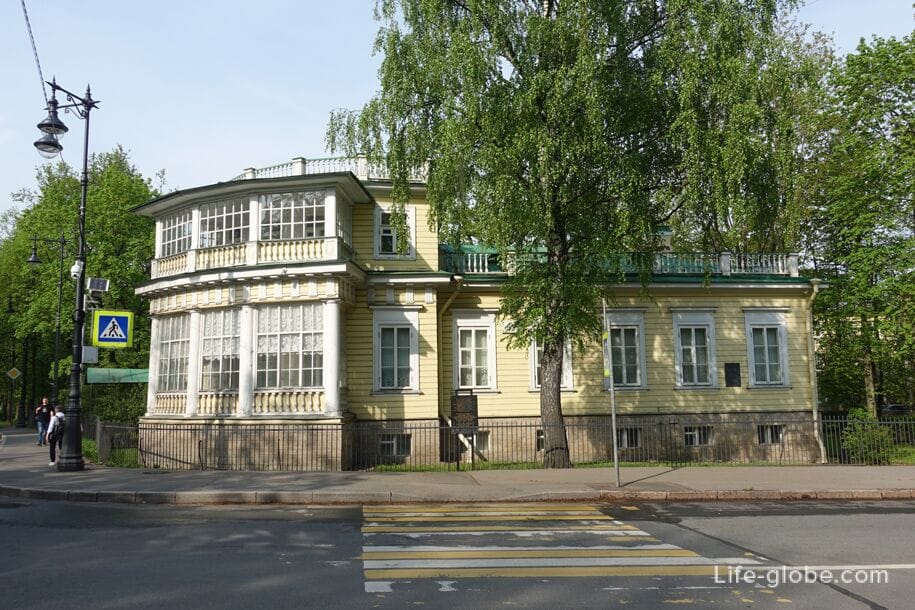
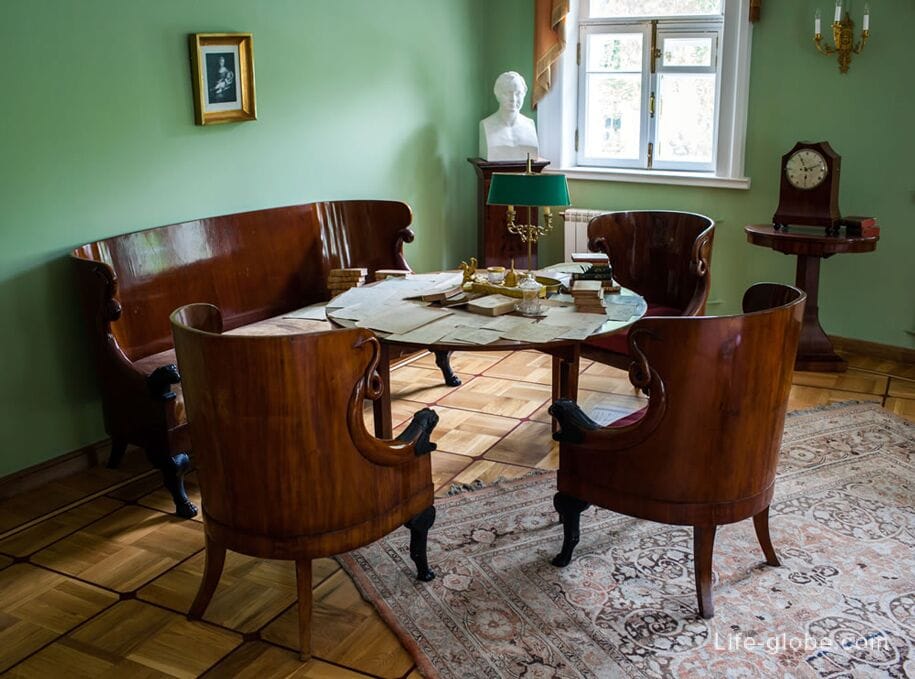
The Memorial Lyceum Museum is located within the walls of the former Imperial Tsarskoye Selo Lyceum, where Alexander Sergeevich Pushkin was educated from 1811 to 1817.
The museum recreates the environment in which lyceum students of the first edition lived and studied, including Alexander Sergeevich Pushkin.
On the basis of archival materials, a large hall, a newspaper room, a library, classrooms, some of the pupils' bedrooms, as well as the apartment of the tutor and the drawing teacher S.G. Chirikov were restored. All these rooms can be visited at the Lyceum Museum.
The address of the memorial Museum-Lyceum: Sadovaya Street, 2. More about the Memorial Museum-Lyceum...

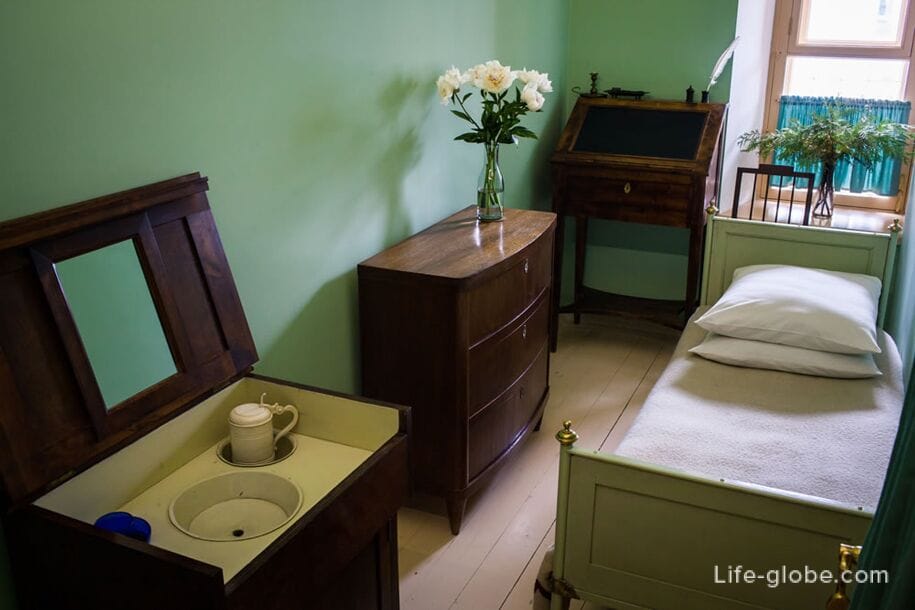
The monument to Catherine II, mounted on a high granite pedestal, is located across Pushkinskaya Street from Cathedral Square.
The bronze sculpture was created by V.E. Gorev. It has a height of 2 meters and depicts the Empress.
The sculpture is an exact copy of the sculpture installed in 2002 in the city of Novorzhev.
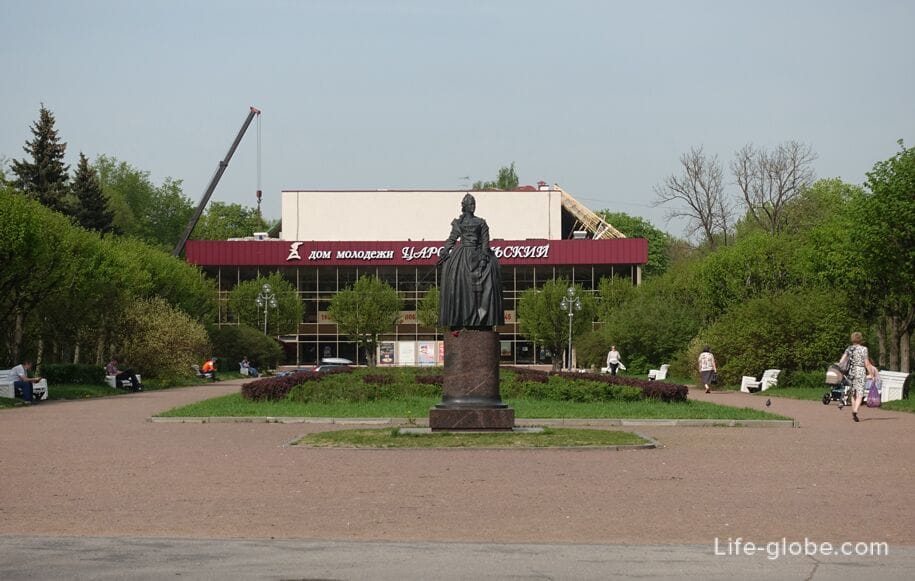
The Moscow Gate is a historical monument and a triumphal arch dedicated to the memory of the events of the Patriotic War of 1812 in the Pushkin city of St. Petersburg (Tsarskoye Selo).
The Moscow Gate was erected as a Triumphal Gate in 1829-1831 by decree of Emperor Nicholas I, designed by architects V.A. Glinka (gate) and A.M. Gornostaev (guardhouse) with the participation of I. Hildebrandt.
The gates were erected in memory of the glorious victories of the Russian Army in the Patriotic War of 1812 and the military company of 1812-1814.
In the guardhouses of the gates there are expositions "Tsarskoye Selo garrison" dedicated to the history of the city outpost and the Tsarskoye Selo garrison.
The Moscow Gate is located at the intersection of the Moscow Highway and Sofia Boulevard. Learn more about the Moscow Gates with expositions...

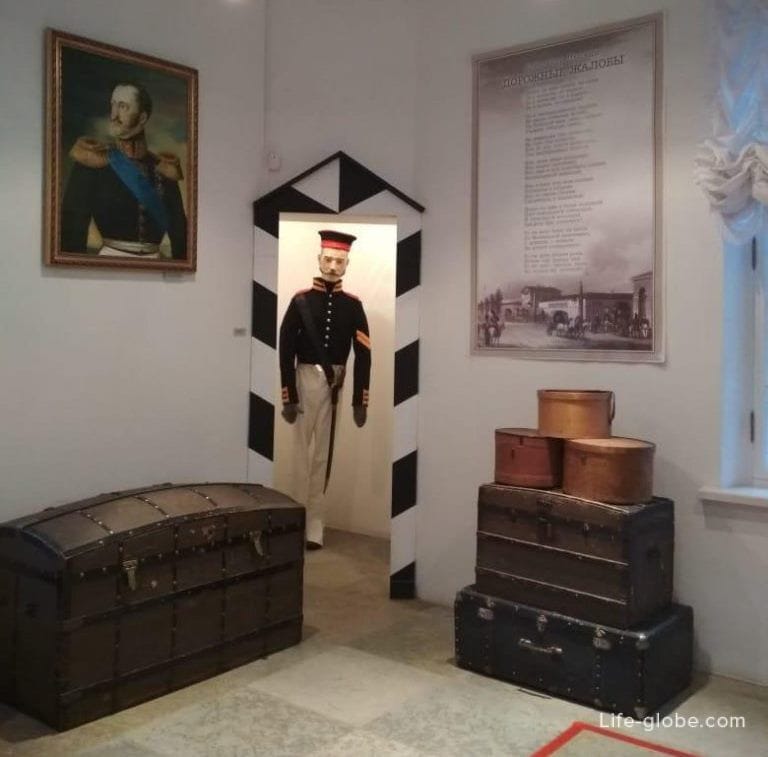
The exposition in the Moscow Gate is part of the Historical and Literary Museum of the city of Pushkin, which also includes an exposition in the main building of the museum, located at the address: Leontievskaya Street, 28.The website of the Historical and Literary Museum of the city of Pushkin: ilmp.ru .
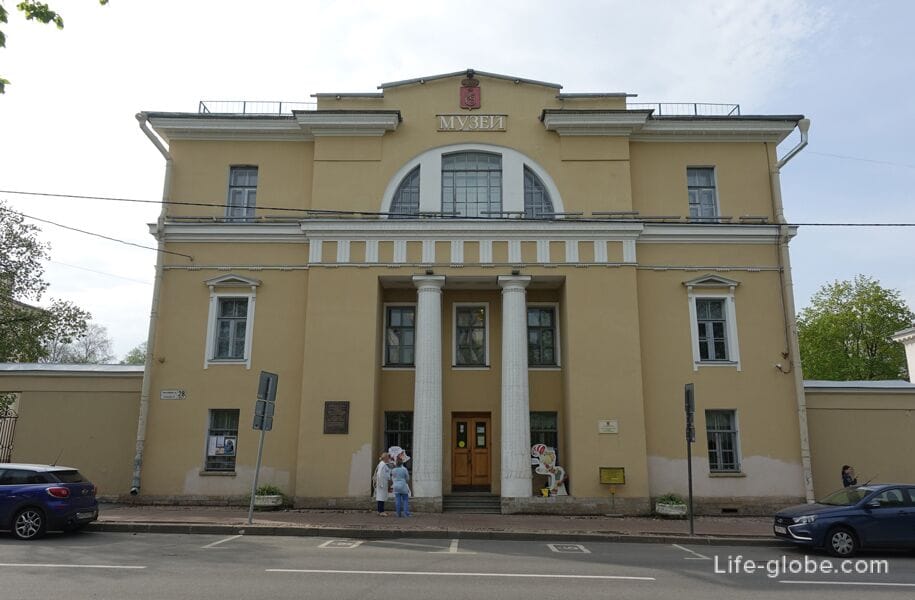
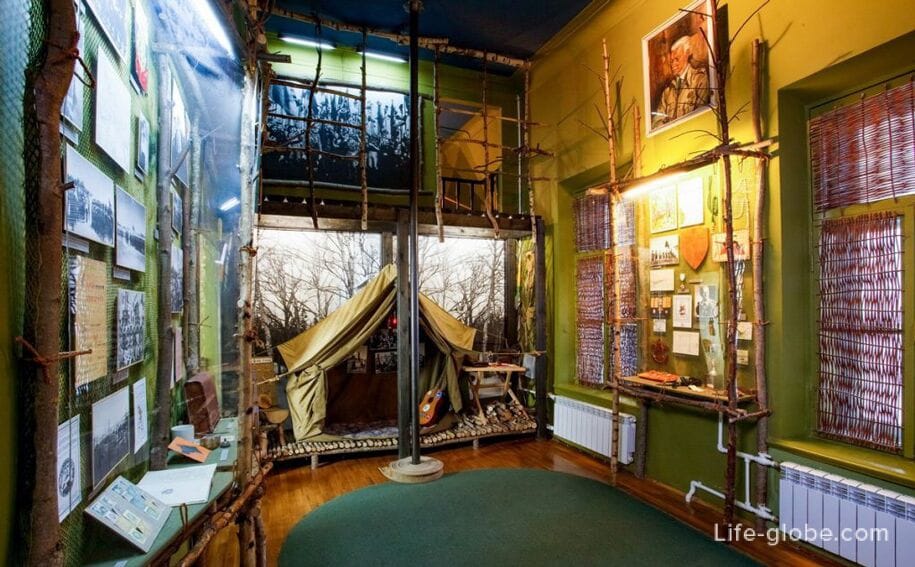
The museum is located in a house built in 1878 by architect A.H. Kolb. The house is now a monument of Russian wooden architecture of the late 19th century.
Pavel Petrovich Chistyakov (1832-1919), a historical painter and portrait painter, professor of the Imperial Academy of Arts, who went down in the history of the Russian art school as a mentor and teacher of the greatest masters of Russian art, lived and worked in this house.
The museum presents paintings by Chistyakov. In a small hall dedicated to Chistyakov, a teacher, the works of his pupils are shown.
The museum hosts traditional musical evenings and an annual celebration of the artist's birthday on the first Sunday of July. Exhibitions of works by contemporary artists are regularly held in the Corner or Small Living Room.
The address of the museum: Moskovskoe shosse, 23.
The museum is a branch of the Academy of Arts Museum. Website: artsacademymuseum.
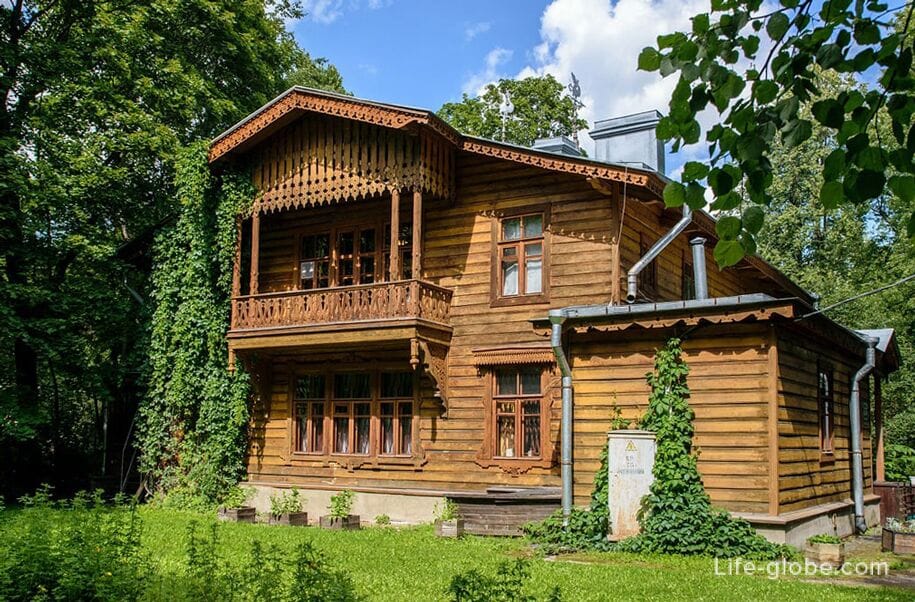
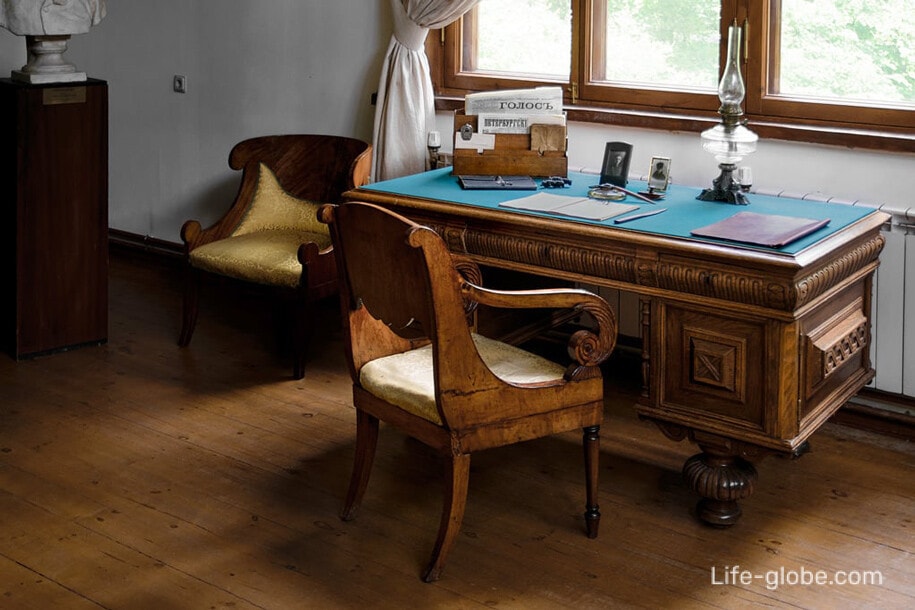
Near the two Lower Cascade Ponds, which are adjacent to the Catherine Park and are part of the five Lower Ponds (three of which are located on the territory of the Catherine Park), there are small green areas with walking paths.
Ponds were formed in the early 18th century thanks to dams built on a small stream. In the middle of the 18th century, the ponds received a regular shape, and in 1775-1778, under the leadership of engineer I.K. Gerard and architect V.I. Neelov, work was carried out to strengthen and deepen the ponds, the banks of which were given natural outlines. Bridges between ponds are bridges-dams.
Two lower ponds stretch from Sadovaya Street (Pavlovskaya Dam). The ponds are called Jordan and Bathing Ponds. The ponds are separated by a bridge-dam across Sovetsky Lane (Sovetskaya/Pashkovskaya dam).
There are several significant sights of the city on the banks of the ponds: Pushkin House of Culture (Concert Hall), Evangelical Lutheran Church of the Resurrection of Christ with a museum and Wedding Palace (formerly Reserve Palace / Kochubeya).
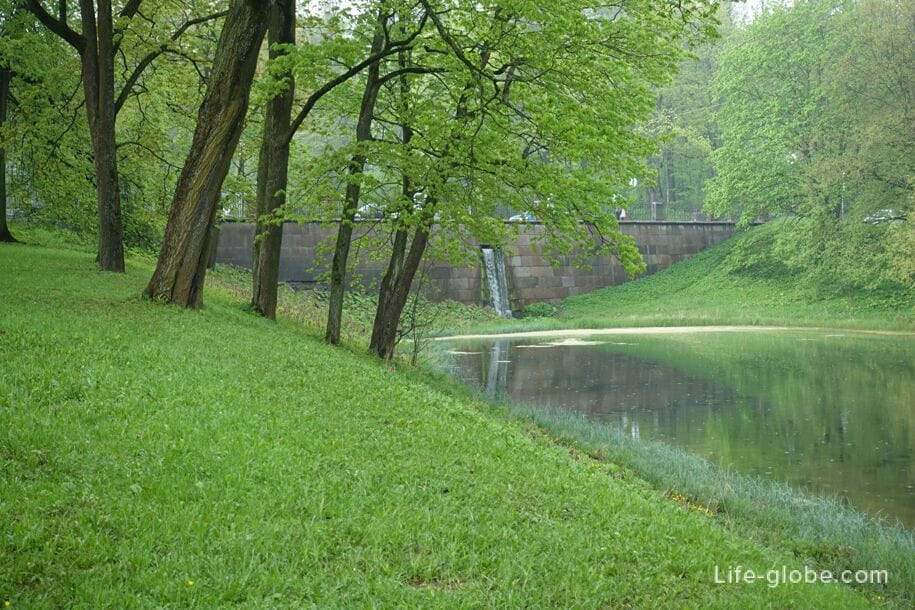
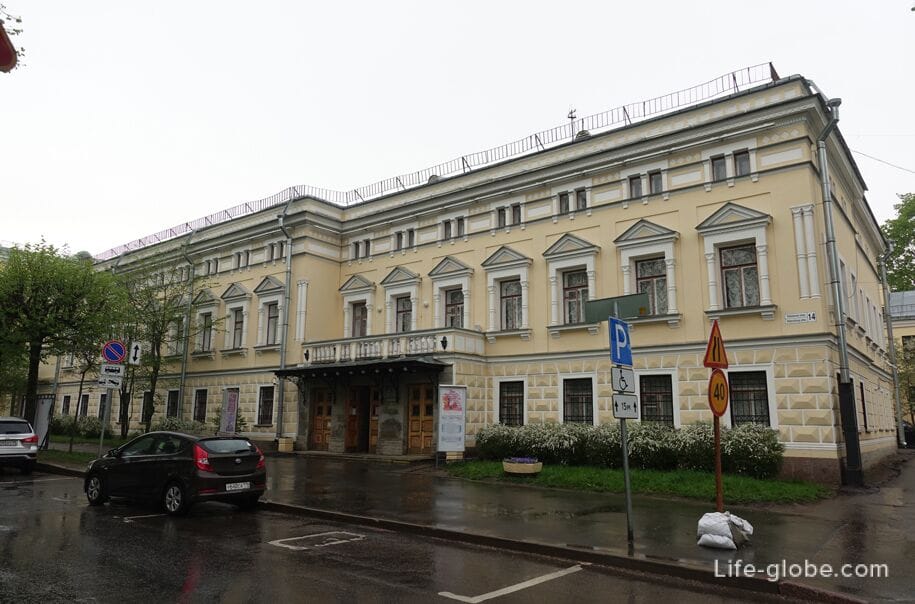
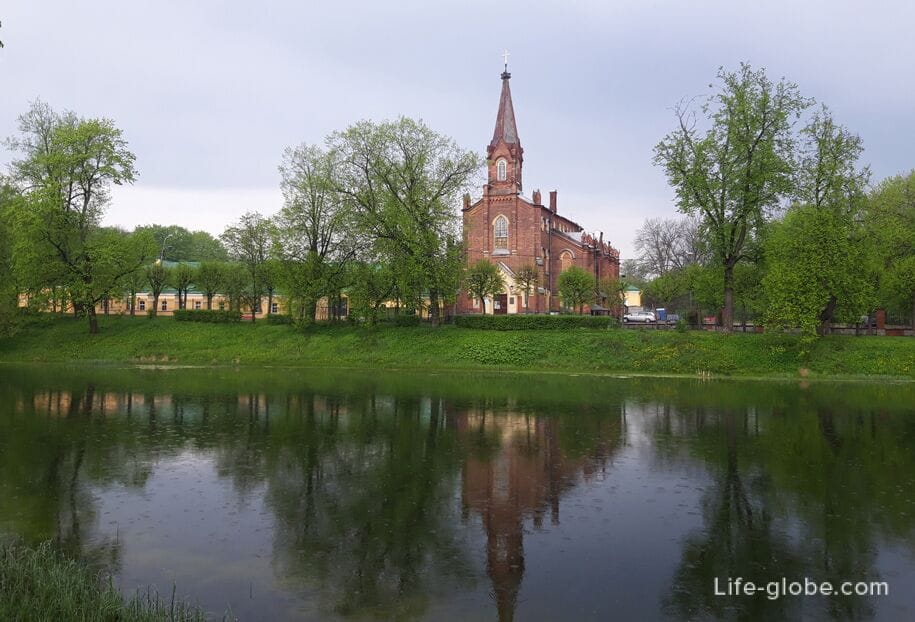
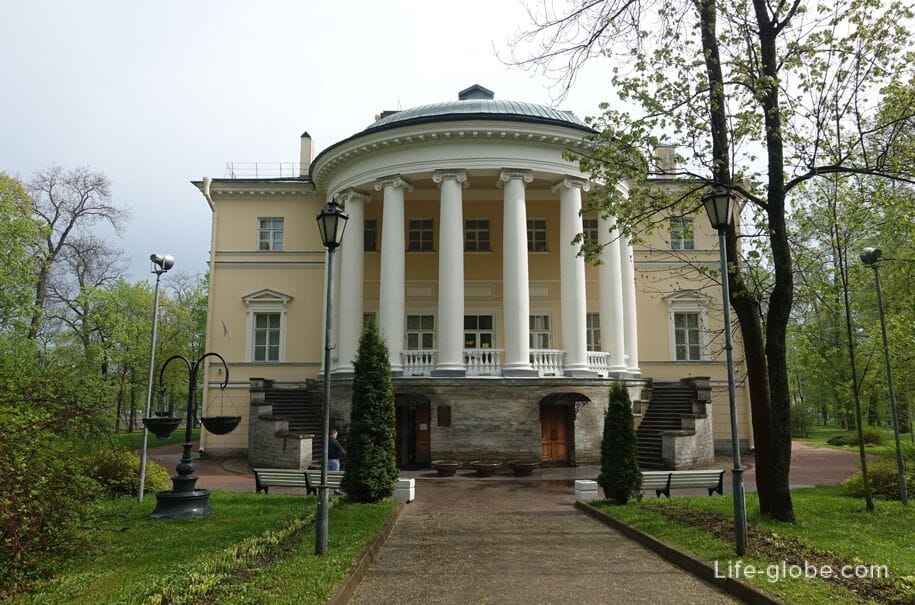
With the foundation in January 1779 of the county town of Sofia (now a historical district in the southern part of the city of Pushkin) Russian Russian Empress Catherine II intended to build a memorial church in honor of the Russian victories in the Russo-Turkish wars. According to the plan of the times of the "Greek project", the temple was supposed to resemble St. Sophia Cathedral in Constantinople.
The consecration of the temple took place on May 20 (31), 1788 in the presence of Catherine II, the heir and courtiers. The design and construction work was led by the Scottish architect Charles Cameron, with whom Ivan Egorovich Starov worked.
In 1933-1934, the cathedral was closed, and the building was transferred to the 32nd mechanized Brigade, which used it as a warehouse.
On March 13, 1988, the church was transferred to the church community. On June 8, 1989, on the patronal feast of the Ascension of the Lord, the first liturgy was served.
The address of the cathedral: Sofia Square, 1.
Cathedral website: sophia-sobor.
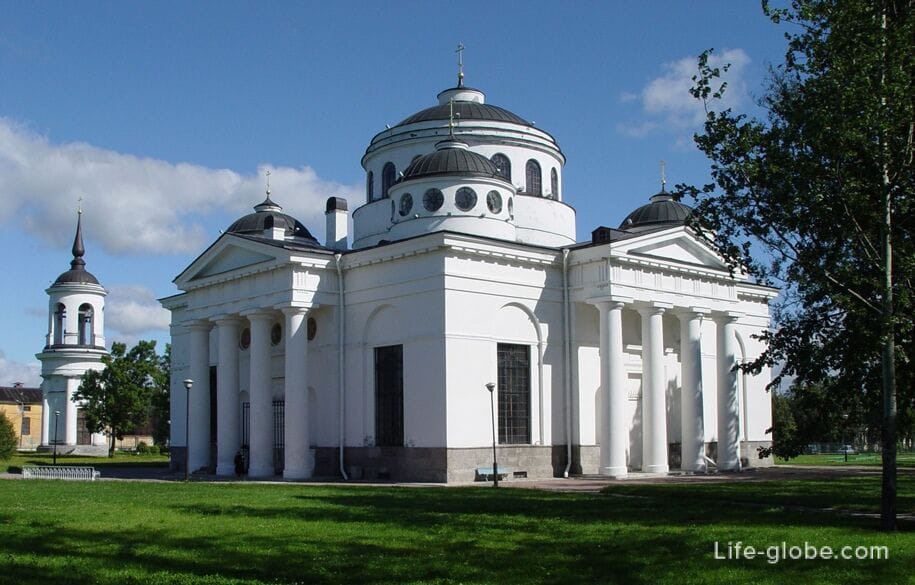
The Egyptian gate was built in the Egyptianizing style in 1827-1830 at the entrance to the Alexander Park of Tsarskoye Selo from the side of the former settlement of Bolshoe Kuzmino (Pushkin), designed by the Scottish architect Adam Adamovich Menelas. The gate project was approved by Emperor Nicholas I.
One of the gate towers was residential until 1985, V.V. Ignatov, who worked as a watchman at the Leningrad Agricultural Institute, lived in it (until his death).
The gate is located at the intersection of Dvortsovaya (formerly Kuzminskaya) Street, Oktyabrsky Boulevard and the Petersburg Highway.
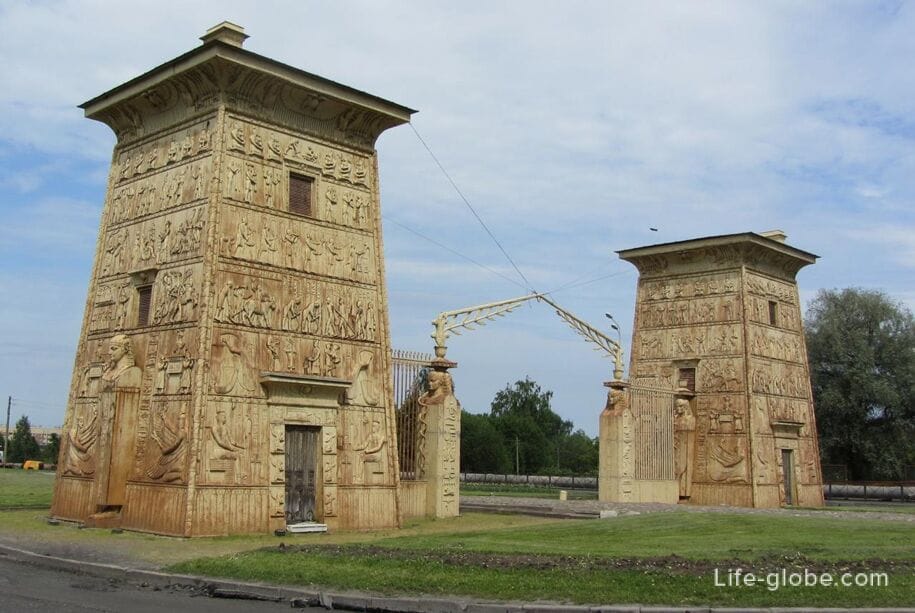
Babolovsky Park is located between the southern part of the city of Pushkin and Alexandrovskaya.
Today Babolovsky Park is a public park with natural vegetation.
The main attraction of the park is the Babolovsky Palace - a bath pavilion of ten rooms, built in 1785 in the "Gothic taste" for Grigory Potemkin.
The palace is best known for its monumental granite bath - the "Tsar Bath", created by Samson Sukhanov in the 1820s.
The Babolovsky Palace was destroyed at the end of the Great Patriotic War, and is currently in a ruined state (restoration work is underway, the approximate completion date is October 2028).
Coordinates of Babolovsky Palace: 59°42'31.0"N 30°20'39.0"E (59.708611, 30.344167).
Entrance to the park is free (free of charge).
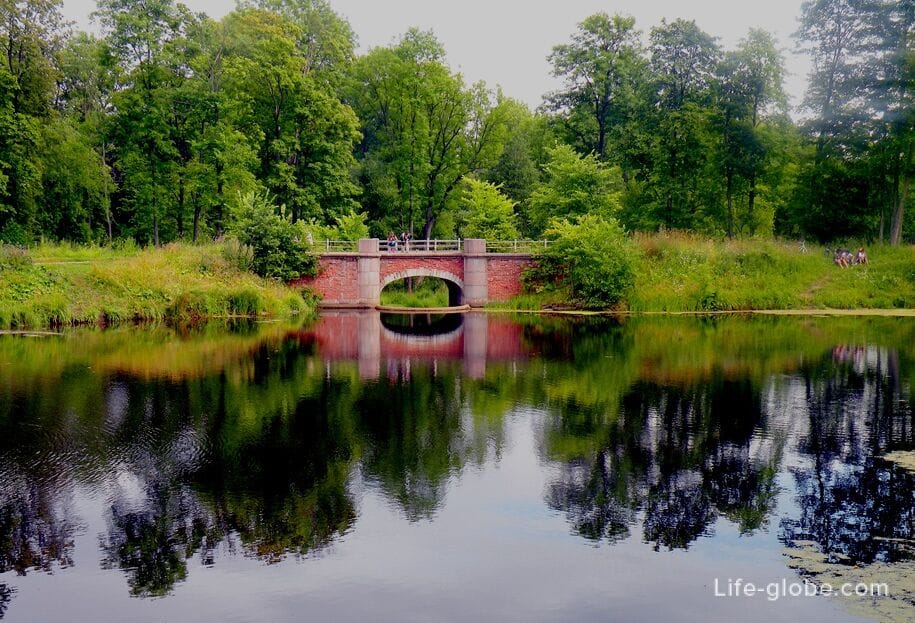
In addition to these, there are other historical buildings, museums, churches, monuments and parks in Pushkin.
Learn more about the sights of Pushkin (Tsarskoye Selo)...
More about museums in Pushkin (Tsarskoye Selo)...
Learn more about parks in Pushkin (Tsarskoye Selo)...

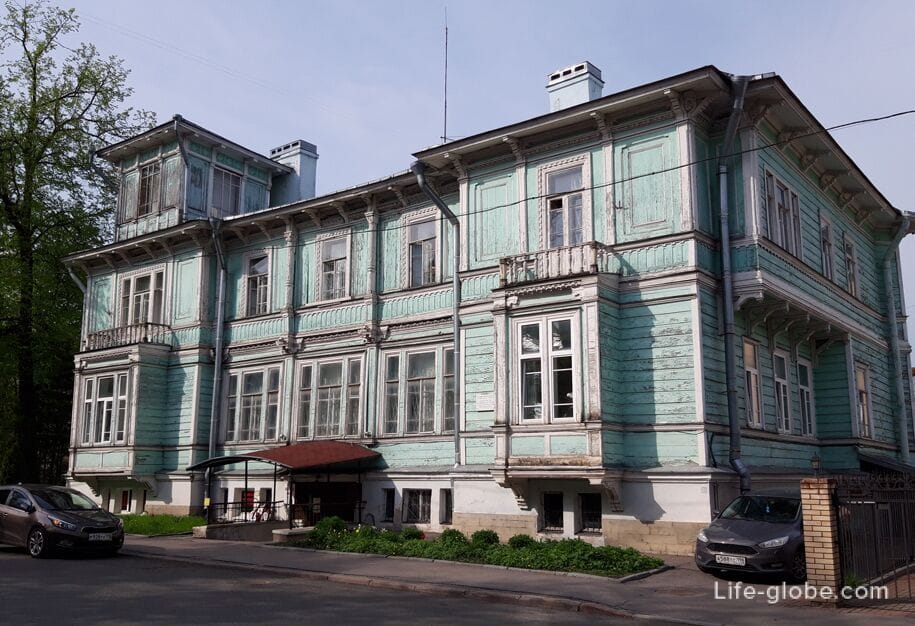

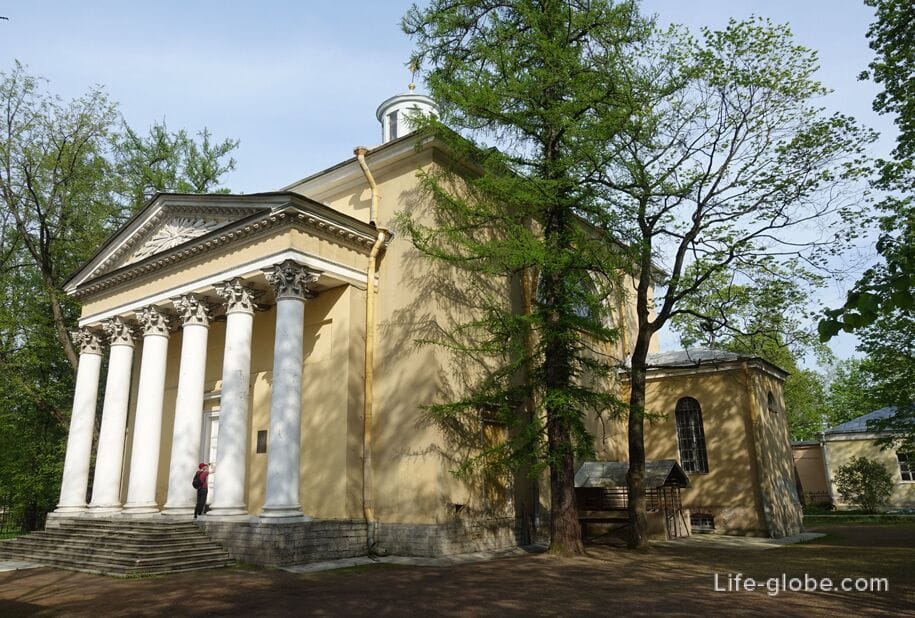
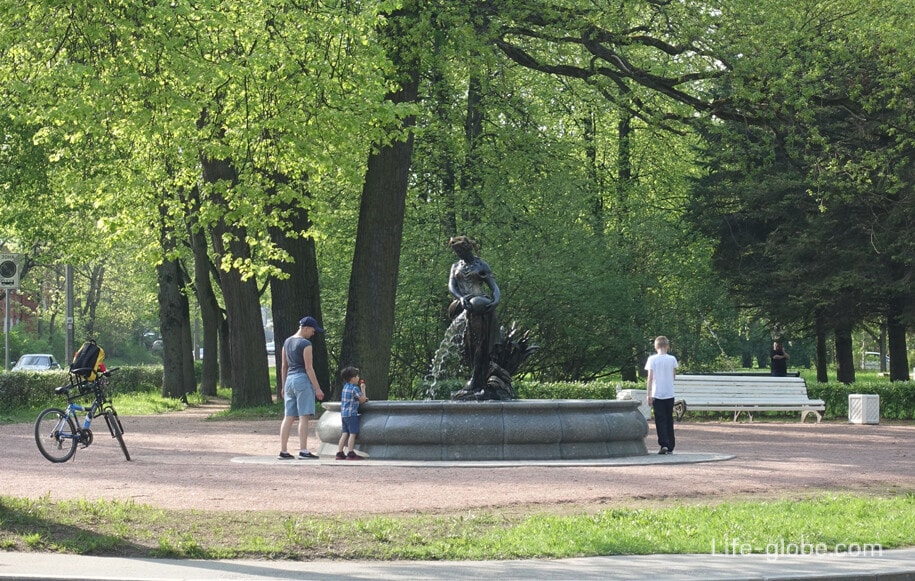
You can explore the city of Pushkin and get acquainted with its parks, palaces and other attractions, as well as visit the city's museums both independently and with a city tour.
Russian Russian city Pavlovsk is located next to Pushkin, which attracts with a large landscape Pavlovsk Park with the Pavlovsk Palace, which is a monument of Russian classicism of the late 18th - early 19th centuries with collections of Russian, Western European and antique art.
The area of the park is about 600 hectares. The park is a unique monument of landscape art of the late 18th - early 19th centuries and together with the Pavlovsk Palace forms a single artistic palace and park ensemble. Its history begins with the founding of Pavlovsk in 1777 on the site where there were originally forest lands where royal hunts were arranged.
In addition to the palace, there are ponds and bridges, cascades, pavilions, monuments and other attractions in the park.
Entrance to the park and the palace is paid.
The park and the palace are part of the Pavlovsk State Museum-Reserve. Website: pavlovskmuseum.
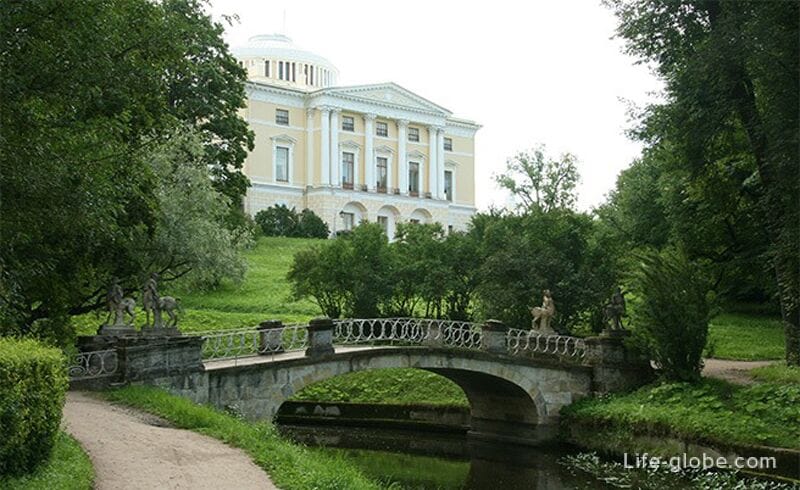
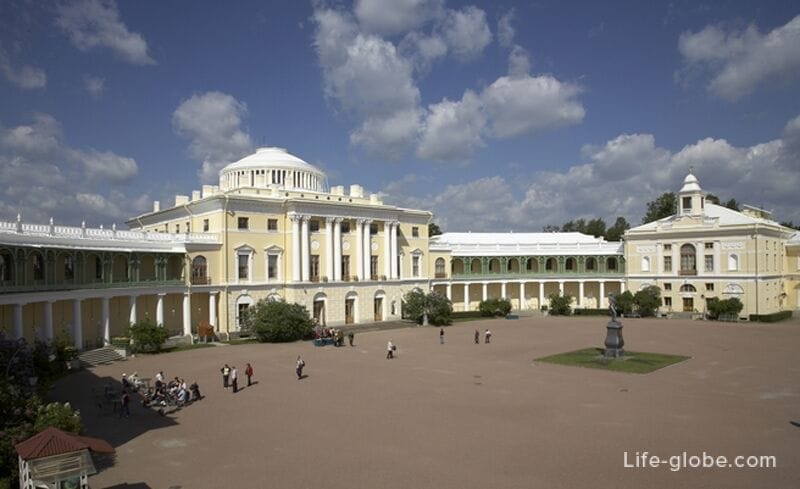
You can get to Pushkin from the Center of St. Petersburg by public buses or trains. From Pulkovo airport - by public transport with transfers. Flights to Saint Petersburg →
You can also take a taxi or a rented car, both from the center of St. Petersburg and from Pulkovo Airport.

Excursions to Tsarskoye Selo from St. Petersburg
You can visit Pushkin (Tsarskoye Selo) on a one-day trip from St. Petersburg or, having stayed in the city for the purpose of better studying it, stay in Pushkin for a few days.
There are enough accommodation facilities in Pushkin, ranging from 5-star hotels to apartments (separate apartments with all amenities).
The 5-star Pevchesky Tower Hotel features restaurants, a bar, a rooftop observation deck, free Wi-Fi and parking.
Breakfast is included in the room rate. Link to the hotel
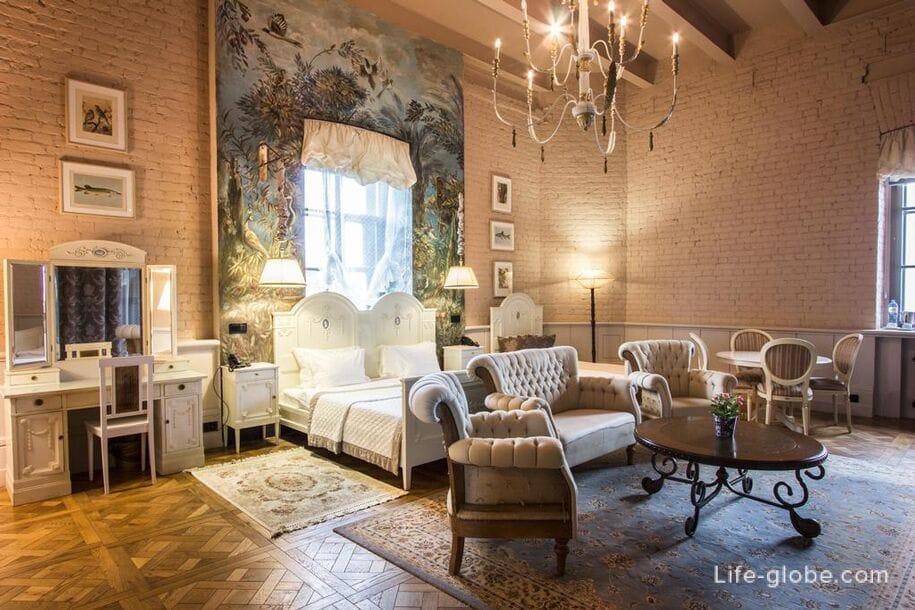
5-star luxury spa hotel "Tsar Palace Luxury Hotel & SPA", located in a historic building.
The hotel has a spa center with a swimming pool, hammam, salt sauna, snow fountain, steam baths and gym; free Wi-Fi, 24-hour front desk, 2 restaurants, lobby bar, private parking and meeting and conference rooms.
The rooms are equipped with climate control, a minibar, a safe and a private bathroom.
A buffet breakfast is included in the room rate. Link to the hotel

3-star hotel Ekaterina, located on the territory of the Catherine Palace and Park Ensemble.
The hotel has a 24-hour front desk, a cafe, free Wi-Fi and parking.
The rooms are equipped with air conditioning, a TV, a work desk and free toiletries.
Breakfast is included in the room rate. Link to the hotel
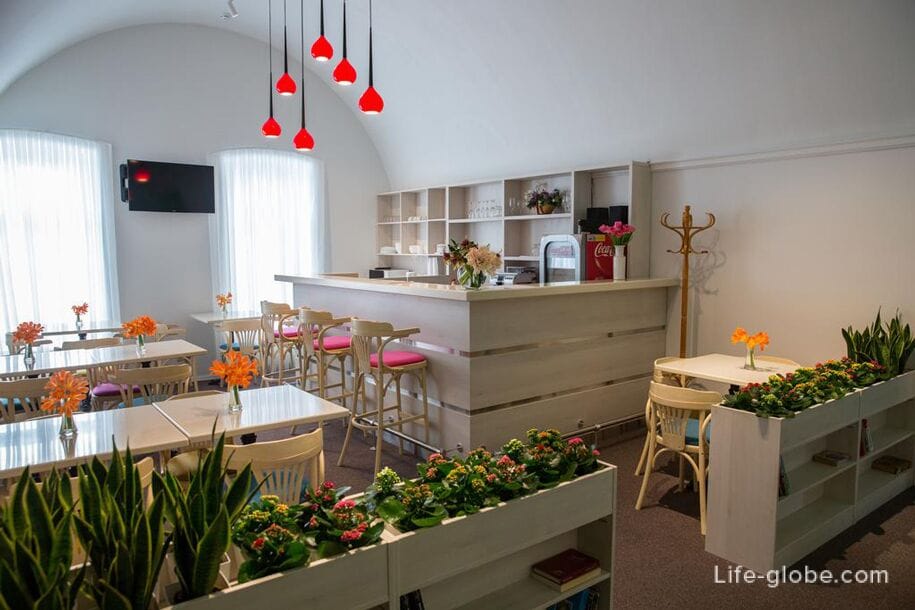
All accommodation facilities in St. Petersburg, including in the city center and in Pushkin, as well as in Pavlovsk and the surrounding area, can be viewed and booked here
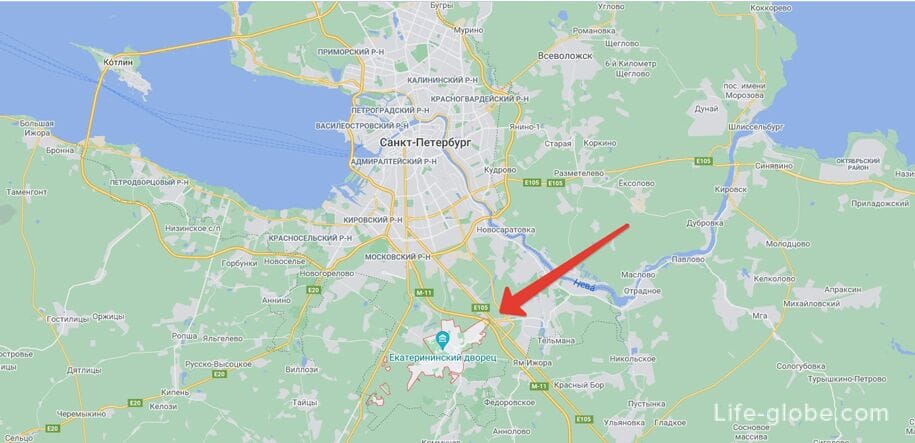
Coordinates of the city of Pushkin (Tsarskoye Selo): 59°43'00.0"N 30°25'00.0"E (59.716667, 30.416667).